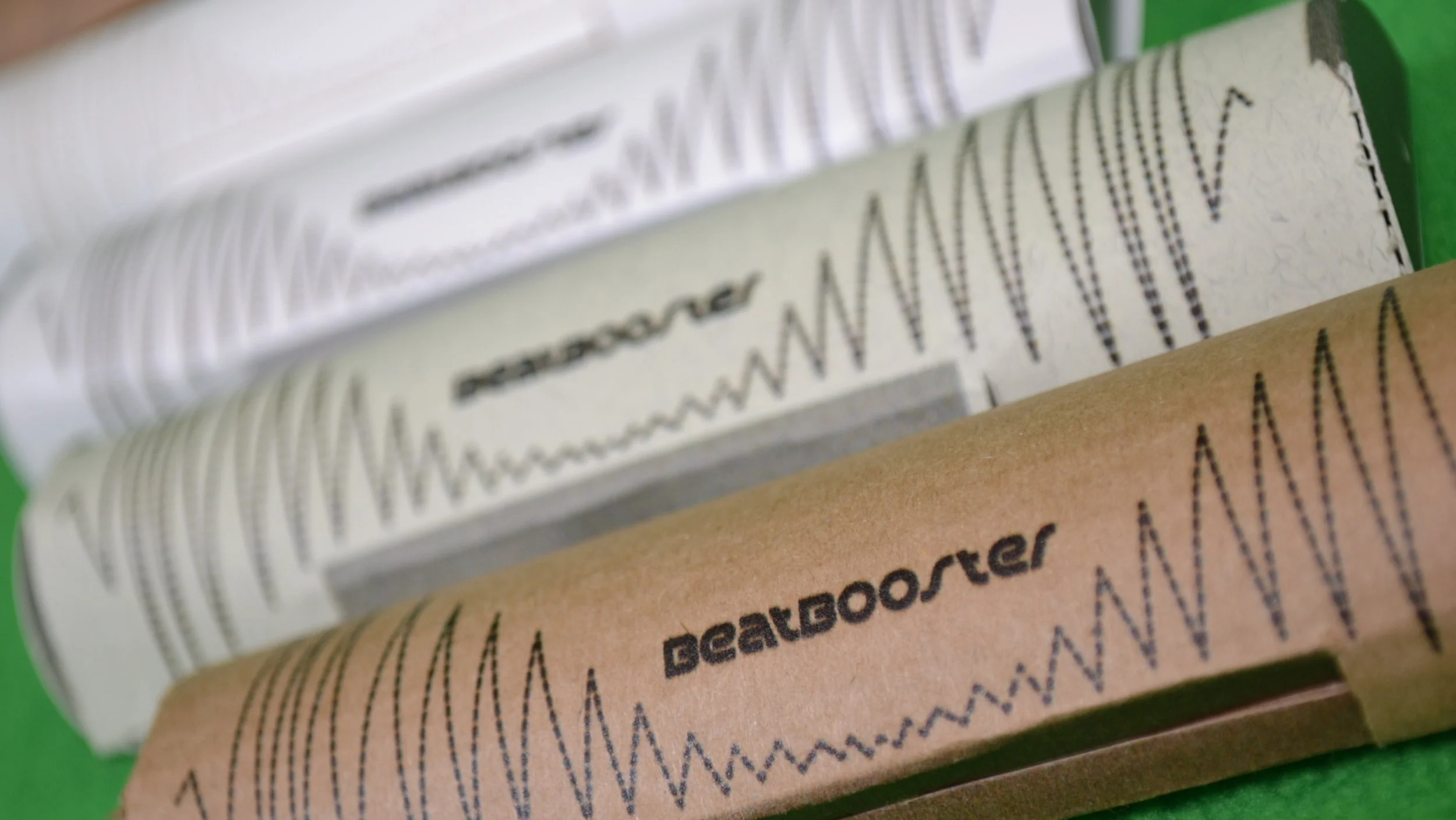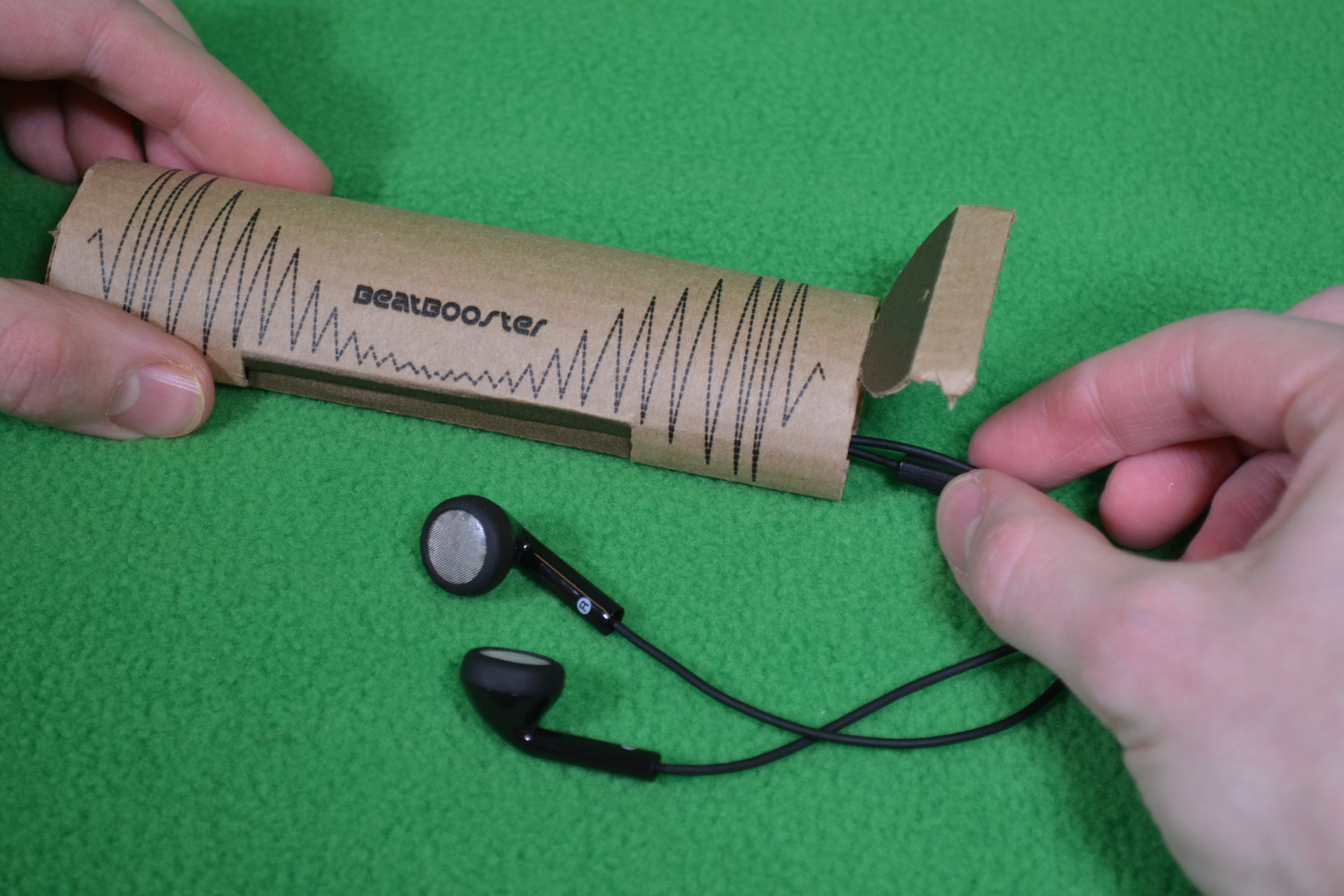Re-Thinking Headphone Packaging
“Not every package has to end up in the trash”
Summary
Overview
I assembled and led a team of young designers, including myself, that entered the 2016 Young Package design competition. This competition taught me to combine sustainability with design.
Design challenge
Create a cardboard package with a secondary use to show how packaging doesn’t have to end up in the trash.
Outcome
We designed headphone packaging that converts into a music amplifier after opening. After taking out the headphones inside, you tear off the two side panels followed by pushing the phone through the perforated cardboard in the center. As the sound travels through the tube it amplifies the music as a makeshift speaker. Out of 722 entries from 46 different countries, our design placed within the Top 40 winners.
My Contributions
Planning the team's objectives, accelerating our learning by connecting us to mentors in packaging design, and experimenting with different materials.
timeline
December - March 2016
Team
Me (project manager, interaction designer) + Adam (interaction designer) + Rebecca (graphic designer)
Our design featured on the competition's website.
Inspired By "Life-Hack" Culture
Started with a high level question to guide our research: How might we reduce consumer package waste through re-use?
With this question in mind, we devised a research plan to explore trends in package use within an urban context. We asked ourselves:
- How do the daily activities of people affect what packaging they use on a regular basis?
- What is the most common type of packaging people throw out?
- If packaging is saved, how is it used?
Observing the everyday habits of people unveiled that cylindrical objects, like cups and toilet paper rolls, are often used to naturally amplify music from phones.
Testing Which Shape Is Loudest
We measured the amplification for various shapes including cubes, octagons, triangles etc. Our results concluded that the cylinder produced the loudest volume.
Digital Prototyping
Speaking to Mentors
New to the knowledge about cardboard folding design, I sought out mentors with knowledge about this concept. I started by contacting various cardboard design companies, asking to speak to managers or designers willing to assist with the project. I connected with one cardboard package designer who taught me how Adobe Illustrator can be used as a tool to create my designs. The photo below shows a mock-up of our package that was made with Illustrator.
Physical Prototyping
We then moved from digital to physical prototyping. I visited 8 different art supply stores to collect data on all the different types of cardboard we could use. I then learnt how to use a laser cutter to create prototypes, followed by site visits to a local printing company that helped me understand the constraints of printing on cardboard. I loved the art of digging through resources and finding the best data and material to apply towards our design.
Addressing The Inside Packaging
Wanting to make the most of our package re-usable, we created the storage for the headphones inside the box to also be used as a headphone detangler that can fit in your pocket. Various designs were sliced and tested onto different strengths of cardboard.
Outcome
Out of 722 entries from 46 different countries, our design placed within the Top 40 winners.
Display of our prize within the Top 40 finalists. Our design was displayed within the czechdesign gallery.
Reflections
It was intimidating to design a product with a material I had never worked with before. I overcame this by connecting myself with experts in the cardboard packaging industry and soaked up any knowledge I could through phone interviews and site visits. Through this I learnt approaches to package design within Adobe Illustrator, cardboard printing methods, the materials available for proper cardboard folding constraints.
It felt rewarding as to how generously people were voluntarily willing to help my team. From the ladies at the art supply store, the professional package designer, and the graphic printing company that allowed us to create our prototypes using their machines.

















